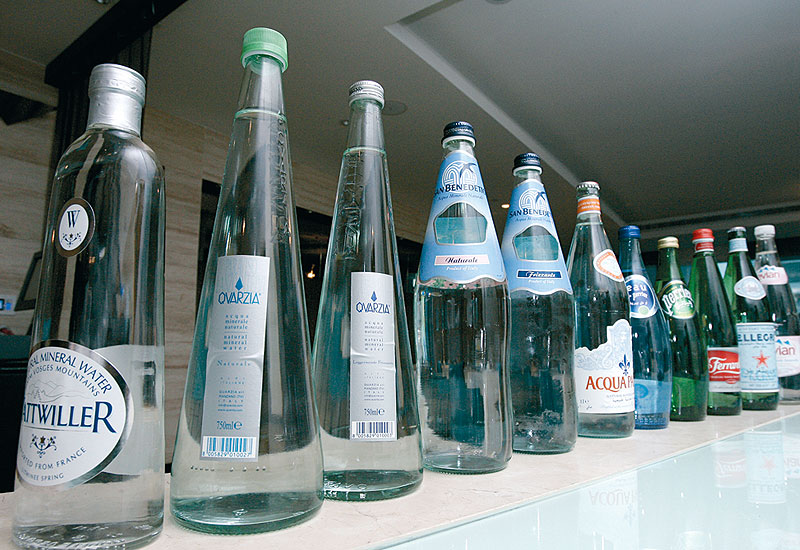 Bottling water is a big business. Ben Watts dives into the industry to find out just how diverse the range of premium water on offer has become and ho
Bottling water is a big business. Ben Watts dives into the industry to find out just how diverse the range of premium water on offer has become and ho
In many restaurants, customers will examine the food and wine menu without giving a second thought to their water selection.
The choice however, has increased dramatically since the 1980s, when Evian and Perrier dominated a relatively new market.
Brands like San Pellegrino and Ferrarelle are now fighting traditional names for market dominance, while local brands swamp the region’s supermarkets and vending machines.
Chris Baker from the Harbour Hotel and Residence in Dubai Marina is one of the few executive chefs challenging customer perceptions by offering a broader range of bottled waters and training staff to understand the differences in taste and quality.
He has constructed an extensive water menu for the property’s Mediterranean restaurant Az.u.r.
“The market has changed from the old days, when the choice was between sparkling and still,” sayd Baker. “If a customer wants something light with a salad or a bit heavier for steak then that water is available to them.
“When you tell people we are comparing food with water they sometimes think we’re stupid but when they try one that matches their meal perfectly they begin to understand the potential,” he adds.
Michael Mascha, founder of the website finewaters.com, has written a book on the subject entitled Fine Waters: a connoisseur’s guide to the most distinctive bottled waters.
“At first glance, waters may not seem to have the individual characteristics that distinguish wines,” says Mascha. “But distinct differences become apparent when you focus on different bottles.
“Customers want a higher level of attention paid to the selection of bottled water available at establishments; still or sparkling just doesn’t cut it any more,” he adds.

| Advertisement |
Making a splash
In the same way that a wine’s quality can be determined by the soil a grape vine is grown in or by the shape of the surrounding valley, many bottled waters come with specific characteristics that make them stand out.
Berg, a Canadian brand of water, is the product of an Arctic iceberg. According to Mascha it is “a very soft water with a super-low mineral content and a great story to tell”.
Peteroa 9500 also captures the imagination - it is bottled at the source following a 9500 year underground journey through the limestone caves and caverns of the Andes mountain range in Chile. Mascha describes it as “a vintage with a low mineral content”.
Another bottled variety that will get tongues waging around any restaurant table is the Australian Cape Grim, a product consisting of rainwater captured on the north-western Tasmanian coast. Mascha says Cape Grim comprises soft and neutral qualities, adding that it is well presented and “perfect for the most subtle dishes”.








 Search our database of more than 2,700 industry companies
Search our database of more than 2,700 industry companies










Dec 19, 2009 , United Arab Emirates
Drinking local bottled water in the UAE has a higher carbon foot print than imported water. The reason is that 99% of all water produced in the UAE is desalinated and has a higher energy consumption per litre produced (it is also subsidised by the UAE government?you are not paying the real cost o...
Aug 8, 2009 , United Arab Emirates
It is a pity that the bottles water concept is still being promoted, instead of just hving filtered pure water in a glass carafe and reducing carbon footprint. Fuel to manufacture bottes, transport , fill, export, wholesaler - retailer, enduser, recylcle. Pheewww thats a lot of fuel.....